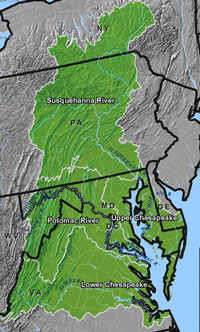 USDA is conducting a survey for the 2011 National Resources Inventory (NRI) – Conservation Effects Assessment Project (CEAP) to collect information from producers in the Chesapeake Bay watershed about farming and conservation practices on cultivated cropland. The information gathered from the survey will help USDA improve and strengthen technical and financial programs that help private landowners plan and adopt on-farm conservation practices.
USDA is conducting a survey for the 2011 National Resources Inventory (NRI) – Conservation Effects Assessment Project (CEAP) to collect information from producers in the Chesapeake Bay watershed about farming and conservation practices on cultivated cropland. The information gathered from the survey will help USDA improve and strengthen technical and financial programs that help private landowners plan and adopt on-farm conservation practices.
NASS representatives will visit more than 1,500 farms throughout Delaware, Maryland, New York, Pennsylvania, Virginia and West Virginia from November 2011 through January 2012. Producers will be asked to provide information on farm production practices; chemical, fertilizer and manure applications; integrated pest management; and adopted conservation practices.
A CEAP study for the Great Lakes and their associated waterways released last month showed that the use of conservation tillage and other conservation practices has resulted in a 50 percent decline in sediment entering rivers and streams, along with 36 and 37 percent declines, respectively, in phosphorus and nitrogen loading.
“CEAP is one on of the strongest and most advanced conservation tools used in American agriculture because it helps farmers and ranchers understand how to improve farming and management activities that help protect soil and water resources,” said Agriculture Secretary Tom Vilsack. “The information gathered on conservation practices in the Chesapeake Bay watershed will help contribute to the region’s sustainability, supporting those who rely on the land and water for livelihoods and recreation.”
Since the CEAP survey was last conducted in the Chesapeake Bay region, farmers have adopted many agricultural best management practices using publicly available technical and financial assistance from conservation programs and through their own initiative and at their own expense. This survey will capture all of those on-farm conservation accomplishments.
